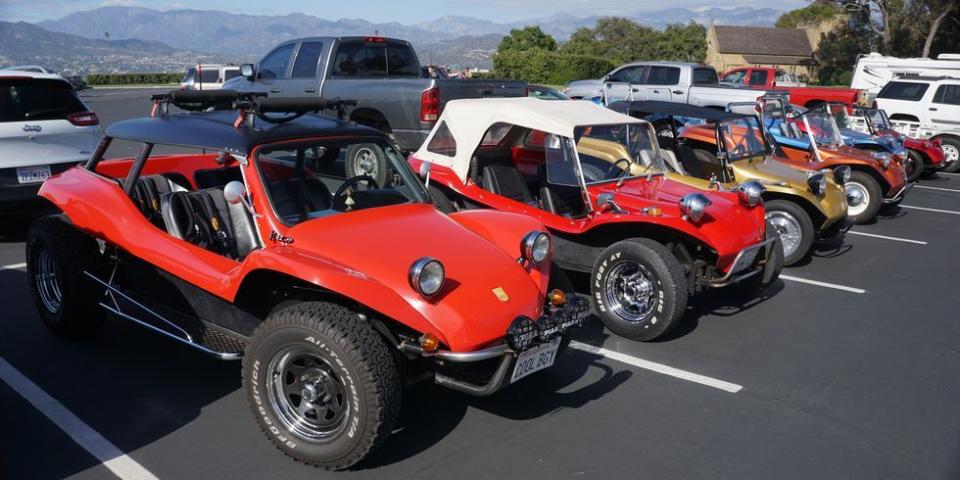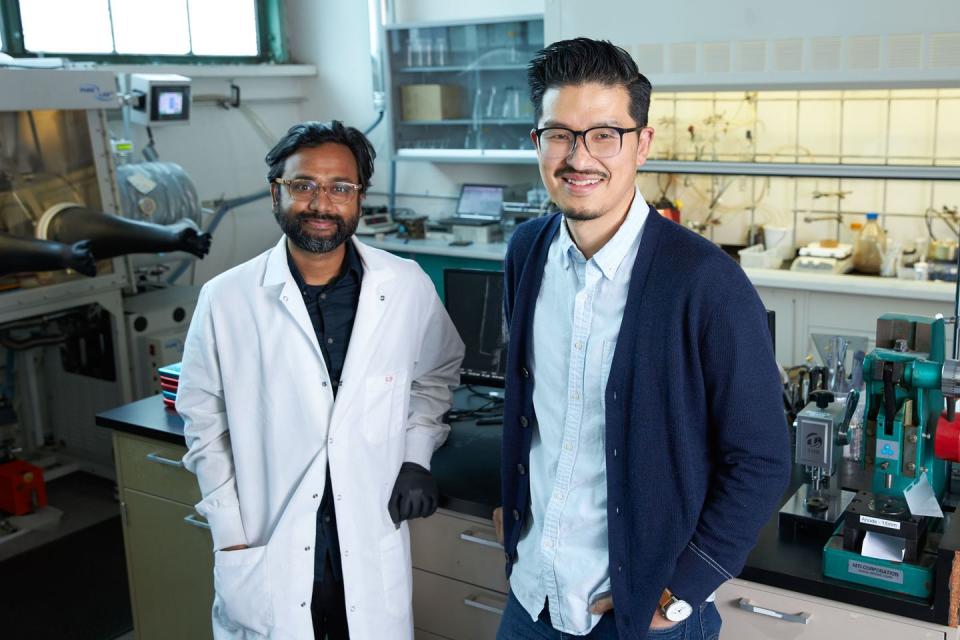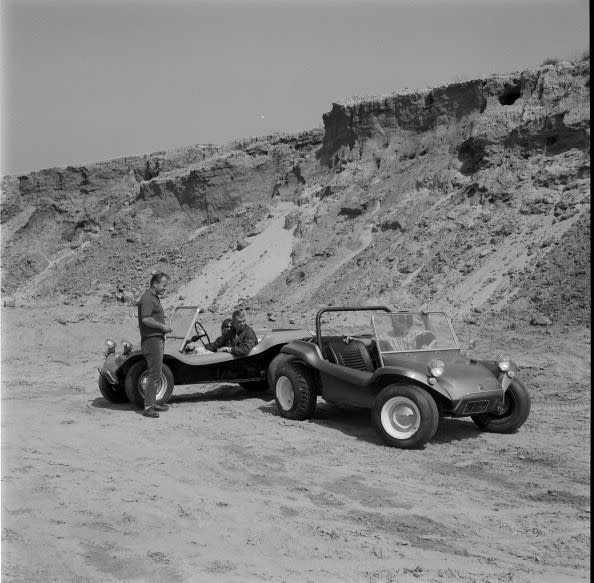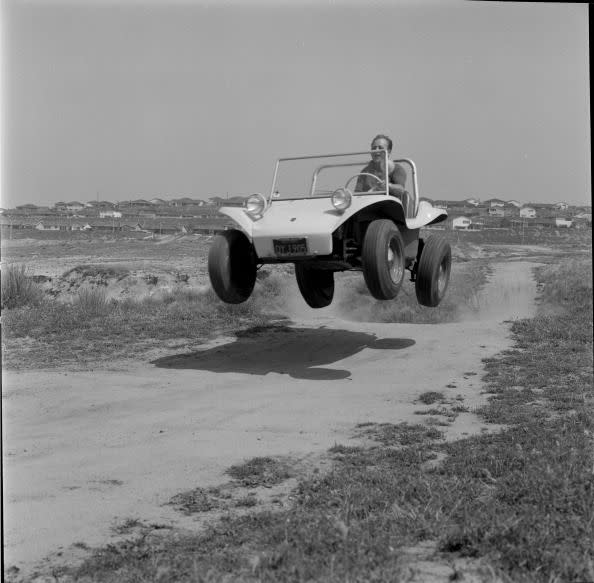First Meyers Manx Under New Owners Will Go All-Electric!

58 years after the birth of the original, a new Meyers Manx is coming and it will be all-electric. Pictured above are two Manxster 2+2s.
The new Manx will be instantly recognizable, designer Freeman Thomas promises.
It'll have 240 hp and 200 miles of range.
When the great Bruce Meyers passed away last year, there was a question of his legacy and what would happen to his greatest creation, the Meyers Manx. You may know it by its generic name, the dune buggy, but that was the term used for the thousands of fake Manxes, dune buggies, for which the real Meyers never got a dime.
The real Manxes were made by Bruce himself in California, the first one in a garage in Newport Beach in 1964. They went on to be wildly popular, both defining and exporting the whole Southern California surf culture to the world. One even set the record for running from La Paz to Tijuana.
When Bruce passed away last year at age 94, you could be forgiven if you’d assumed that with him would go the Meyers Manx, because, even until the end Bruce was still running the company that made the kits that launched summertime beach buggy dreams all over the world.
Instead, before he passed away Bruce and his wife Winnie sold the company to tech entrepreneur Phillip Sarofim and designer Freeman Thomas. You couldn’t have asked for a better pair of heirs.
Sarofim is a venture capitalist, car collector, and racer with a passion for cool cars. Thomas is a designer who had worked at VW, Audi, and Porsche and designed such icons as the New Beetle and the Audi TT. He has also owned many VW vans, Porsche 911s and other cool cars over his long and creative life.
All that is a roundabout way of introducing a car we can’t even show you yet, the newest, latest iteration of the modern Meyers Manx. The only thing we know for sure is that it will be an EV, powered by an innovative battery pack system designed by a tech firm in which Sarofim invested.
That company is called Coreshell and it makes a coating that protects the cathode and anode of lithium-ion batteries to give them what Coreshell says will be longer life and more useable capacity while reducing the threat of runaway thermal incidents (i.e. fires).

“Right now, what happens every time you're charging and discharging your battery is that you essentially are rusting them from the inside out. You have this degradation there that happens on the anode and cathode,” said chemical engineer and Coreshell CEO Jonathan Tan.
“We're not the first, as you've seen, to pick up the concept of being able to coat the inside of your battery, or almost anything inside of your battery, with this nano layer of film that prevents that degradation from happening. We are the first to be able to show it off in a scalable process that integrates seamlessly into battery production. So that's kind of our key claim to fame—the scalability of that process.

“And in terms of the features, it's not just longer lifetime, but its ability to charge into higher voltage range, higher limits, and to squeeze more juice out of every single battery, have it last longer and prevent the thermal runaway. So it's kind of a combination of all three.”
If you had that product and wanted to promote it, could you think of a better way than putting it in the new Meyers Manx?
Getting a look at the new Manx is still several months or a year away. In the meantime, the team will be testing several mules to determine everything from acceleration and regenerative braking to functional car tops and where to put the electric motor (right now it’s planned for a mid-motor configuration).
They’ll have running prototypes by next year, Thomas said. One thing is certain, when it does come, it will be identifiable at first glance as a Meyers Manx.

"When people actually see it, I'm hoping there'll be an ‘aha’ moment," Thomas said by phone from the company’s headquarters in Orange County. "Bruce's masterpiece, he created something really special, and everybody identifies with it. They recognize it, they know what it is, and at the same time, visually, it's something that's not aggressive. It's something that gives you a Zen (moment), that makes you smile. I always called it a ‘vessel of freedom.’ But it was so much more than that.”
How close will the new car be to the Manx we know and love? Thomas and the design team started by digitizing the original Manx, then loaded it onto a computer and looked at it from every angle: its wheelbase, its width, even how they sat in it. Then they looked at the electrification components (the battery, battery systems, and EV drivetrain) and where they would all fit.
"We started off looking at the challenge of packaging, and electrification, as well as the size. And one of the goals that I wanted was not to change the size of the Meyers Manx at all," Thomas said. "It's kind of like taking the original 911, and it goes through all of its generations of evolution from let's say, 901 to 964. Dimensionally it's still the same car, but it's evolved. It's just a better, more capable car."
Thomas says you won’t be able to tell by looking at it that it’s an EV. All the components will be hidden, but you’ll still know it’s a Manx. “Anytime you have something that is an icon like that, you want to protect it, you want to preserve it.”

The team tinkered with the packaging of various-sized battery packs and electric motors, and the current configuration for the car would weigh 1600 to 1700 pounds, about 400 pounds more than an original Manx. It would have 180 kw, or 240 hp, and would have a range of 200 miles.
There was no mention of battery size. After the electric version launches, the idea is to add a gasoline version powered by an original air-cooled Volkswagen flat four as a kit car. Both will be fully California-capable.
"It's not really a car you drive daily on the freeway. It's a car that you drive down Coast Highway, and off-road," Thomas said. "This is going to be fully off-road-capable, as well as be able to handle Mulholland and be able to just take a quiet, relaxing drive down Coast Highway to your favorite coffee stop.
"It's not going to be aggressive. We will test the power and we have software that we will be able to get the power exactly where we want it so it doesn't scare people, but it also has really good performance—it accelerates amazingly. We want people to just feel confident in it."
It will have everything from a hardtop that you’ll be able to fully seal in and heat, to a soft top and a Bimini top. Even though it will be built under the directives of the small-volume manufacturers’ law, it will be safe: They’ve built in front and rear crush zones, side impact zones, a collapsible steering column that tilts, and an integrated roll bar around the windshield that you can’t even see.
"It's not going to replace your everyday CUV, SUV, electric thing, gas thing. It's not the goal of this," Thomas said. "The goal of this is to have something that you fall in love with, and you want to drive it as much as you can."

 Yahoo Autos
Yahoo Autos 